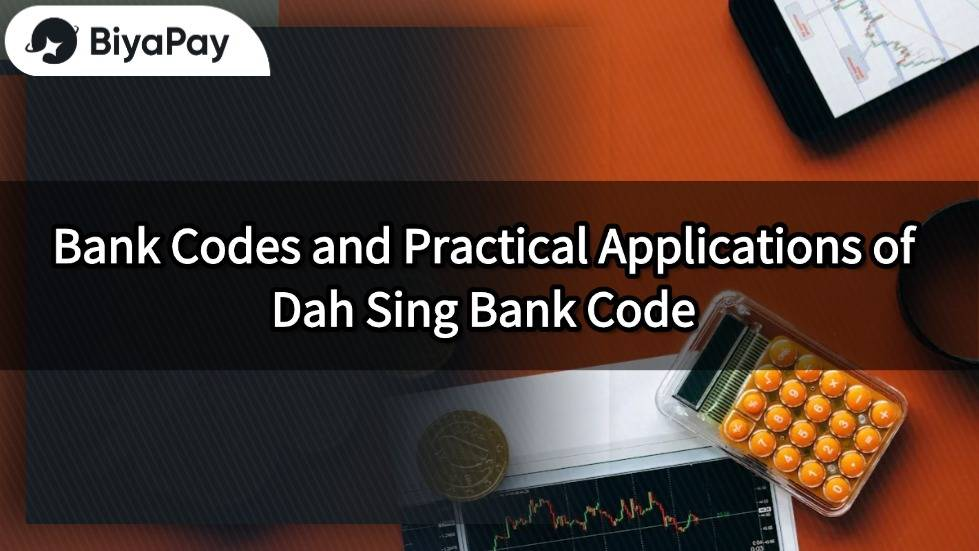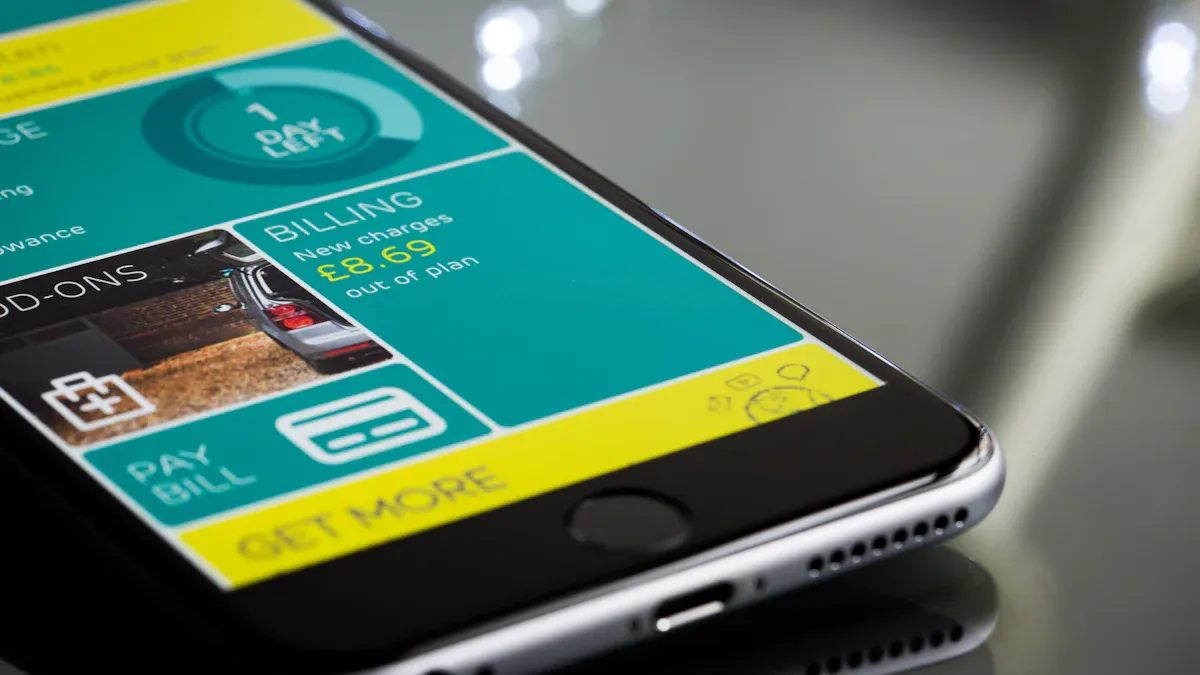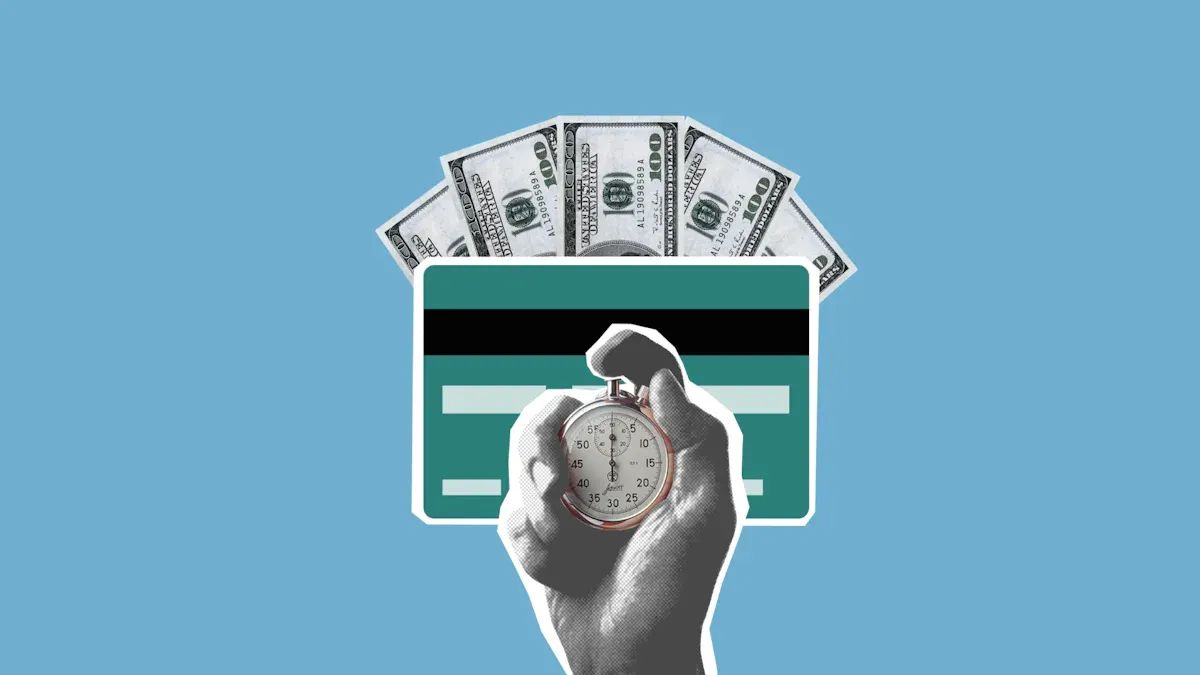- EasyCard
- Trade
- Help
- Announcement
- Academy
- SWIFT Code
- Iban Number
- Referral
- Customer Service
- Blog
- Creator
Bank Codes and Practical Applications of Dah Sing Bank Code

Image Source: unsplash
When you conduct transfers or payments in Hong Kong, the bank code and Dah Sing Bank code directly affect whether funds are correctly credited. Whether you use Faster Payment System (FPS), online banking, or process international remittances, these codes help the system accurately identify the recipient bank. As long as you input the bank code correctly, you can enhance transaction efficiency and reduce the chance of errors.
Key Points
- The bank code is a three-digit number that helps the system accurately identify different banks, ensuring funds are safely credited.
- The Dah Sing Bank code is “024,” which must be used correctly in local transfers, FPS, electronic payments, and international remittances.
- Correctly entering the bank code and account number can improve transaction efficiency and reduce the risk of fund errors or delays.
- You can look up bank codes through online banking, bank statements, or by calling customer service, ensuring the information is accurate.
- Developing a habit of verifying and recording bank codes helps ensure fund safety, avoiding transfer errors and unnecessary trouble.
Bank Code Definition
Format and Role
When you process bank transfers, the bank code serves as an important identification tool. The bank code typically consists of three digits, with each bank having a unique code. This code helps the system accurately distinguish between different banks, ensuring funds are directed to the correct account. For example, when you input recipient details in online banking, you must enter the correct bank code; otherwise, funds may be transferred to the wrong bank, causing unnecessary losses.
The following table lists bank codes and account formats for some major Hong Kong banks to help you understand better:
| Bank Name | Bank Code | Account Number Length Range | Example Account Format |
|---|---|---|---|
| HSBC | 004 | 10-12 digits | 1234569001 |
| Bank of China (Hong Kong) | 012 | 11 digits | 61111****67 |
| Hang Seng Bank | 024 | 10-12 digits | 1234569012 |
| Standard Chartered Bank | 003 | 11 digits | 433888***81 |
| Dah Sing Bank | 040 | 10-11 digits | 7168****888 |
| ZA Bank | 387 | 12 digits | 888812***678 |
You can see that different banks have different codes and account formats. This information helps you reduce errors when filling out transfer details.
Role in Hong Kong’s Banking System
The bank code plays an indispensable role in Hong Kong’s financial system. Every time you use FPS, electronic payments, interbank transfers, or international remittances, the bank code is involved. This code allows the system to automatically identify the recipient bank, improving transaction speed and accuracy. For example, when you use FPS to transfer money to a friend, as long as you enter the correct bank code and account number, the funds can be credited instantly. The bank code also facilitates settlement between banks, ensuring every transaction is completed securely. Correctly using the bank code ensures your funds are safe, reducing delays or losses due to incorrect information.
Dah Sing Bank Code
Code “024”
When you handle bank transfers in Hong Kong, you often encounter the Dah Sing Bank code. This code is “024,” a three-digit bank code. As long as you input “024” in online banking, mobile banking, or FPS, the system can accurately identify Dah Sing Bank. This code remains unchanged even if the bank upgrades its system. Even after Dah Sing Bank undergoes technical updates, it will continue to use the “024” code. This ensures that your past transfer records and existing financial services are unaffected. You don’t need to worry about funds being transferred to the wrong bank due to system upgrades.
Tip: When filling out recipient details, remember to check if the Dah Sing Bank code is correct. This reduces the chance of errors and ensures fund safety.
Main Uses
The Dah Sing Bank code plays a crucial role in various financial scenarios. You need to input this code for local transfers, interbank transactions, electronic payments, or international remittances. Here are common uses:
- Local Bank Transfers: When transferring between different Hong Kong banks, you must input the Dah Sing Bank code to ensure funds are credited correctly.
- Faster Payment System (FPS): When using FPS for instant transfers, the system automatically identifies Dah Sing Bank based on “024.”
- Electronic Payments: When shopping online or paying bills and selecting Dah Sing Bank as the payment bank, you need to input this code.
- International Remittances: When remitting from overseas to a Dah Sing Bank account in Hong Kong, the bank requires you to provide the Dah Sing Bank code to ensure funds are credited smoothly.
As long as you use the Dah Sing Bank code correctly, you can improve transaction efficiency and reduce the risk of fund delays or errors.
Application Scenarios

Image Source: pexels
Local and Interbank Transfers
When managing daily finances in Hong Kong, you often need to perform local or interbank transfers. When transferring from a Dah Sing Bank account to another Hong Kong bank, such as HSBC or Hang Seng Bank, you must input the correct bank code. This ensures the system can accurately transfer funds from your account to the recipient’s account. When operating through online or mobile banking, you typically see a field for “Bank Code.” As long as you input the correct bank code, such as Dah Sing Bank’s “024,” the funds can safely reach the recipient’s account.
Tip: When filling out recipient details, it’s advisable to confirm the recipient’s bank code and account number to reduce the risk of transferring funds to the wrong bank.
FPS and Electronic Payments
When using FPS or other electronic payment tools, the bank code is equally important. FPS allows you to transfer money instantly to friends or merchants. By entering the recipient’s phone number or email address, the system automatically matches their bank account. However, when you need to manually input bank details, correctly entering the bank code becomes crucial. For example, when selecting Dah Sing Bank as the recipient bank, you must input the Dah Sing Bank code “024.” This allows the FPS system to accurately transfer funds to the Dah Sing Bank account.
When shopping online or paying bills, some electronic payment platforms also require you to select the recipient bank and input the bank code. Choosing correctly ensures funds are credited instantly, improving transaction efficiency.
International Remittances
When remitting from overseas to Hong Kong, the bank code and Dah Sing Bank code are equally essential. When transferring from the U.S. or other countries to a Dah Sing Bank account in Hong Kong, the remittance form requires you to provide the recipient bank’s code. You must input the Dah Sing Bank code “024” so the overseas bank can accurately identify the recipient bank. You also need to provide the recipient’s account number and SWIFT code. Correctly filling out all details ensures funds are smoothly credited to the Hong Kong Dah Sing Bank account, avoiding delays or returns due to incorrect information.
| Remittance Information Item | Example Content |
|---|---|
| Recipient Bank Name | Dah Sing Bank |
| Bank Code | 024 |
| SWIFT Code | DHBKHKHH |
| Recipient Account Number | 7168****888 |
Note: When processing international remittances, it’s advisable to confirm all details with the recipient, including the Dah Sing Bank code and SWIFT code, to ensure fund safety.
In various financial scenarios, correctly using the bank code and Dah Sing Bank code significantly enhances transaction efficiency and accuracy. This not only ensures your funds’ safety but also reduces trouble caused by data errors.
Lookup and Input

Image Source: pexels
Lookup Methods
You can use multiple methods to look up the Dah Sing Bank code. The most straightforward method is to log into the online banking platform, where the bank code is typically displayed during transfers or when adding a payee. You can also check your monthly bank statement, where the bank code is generally printed on the account details page. If you don’t have internet access, you can call the Dah Sing Bank customer service hotline, and staff will provide the correct bank code immediately.
Additionally, Airwallex’s website provides a “Hong Kong Bank Codes List”, detailing the official codes of all licensed Hong Kong banks, including the Dah Sing Bank code. This official guide not only explains the definition of bank codes but also guides you on how to look up and verify information, ensuring accuracy in daily transfers, automatic transfer setups, or cross-border payments. You can refer to these authoritative sources to reduce errors.
Input Considerations
You must be particularly careful when entering the bank code. Common errors include confusing the bank code with the account number or mistyping a digit. These mistakes can lead to funds being transferred to the wrong bank or even returned, affecting transaction progress. You should verify the recipient’s provided bank code, especially the Dah Sing Bank code, before each entry. It’s recommended to double-check all details after input to ensure accuracy.
Tip: You can record frequently used bank codes on your phone or in a notebook for easy reference. Comparing with an official list or bank statement during transfers significantly reduces errors.
By developing good habits and correctly looking up and entering bank codes, your funds can safely and accurately reach the designated account.
When managing daily finances, correctly using the bank code and Dah Sing Bank code is crucial. These details help you enhance transaction efficiency and prevent funds from being misdirected to other banks. You should regularly check official channels to ensure accurate input. As long as you verify carefully, every transfer can be completed smoothly, ensuring fund safety.
Tip: If you have any questions, contact bank customer service or check the official website for the latest information.
FAQ
What is a bank code?
A bank code is a three-digit number used to identify different banks in Hong Kong. You must enter it correctly during transfers or remittances to ensure funds are safely credited.
What is the use of the Dah Sing Bank code “024”?
When you input “024” during local transfers, FPS, electronic payments, or international remittances, the system can identify Dah Sing Bank, improving transaction accuracy.
What happens if the bank code is entered incorrectly?
If you enter the wrong bank code, funds may be transferred to the wrong bank or returned. This can delay transactions and may incur additional fees.
How can I find the correct bank code?
You can log into online banking, check your bank statement, or call customer service. Official websites also provide a complete list of bank codes for reference.
What information is needed for international remittances to Dah Sing Bank?
| Required Information | Example |
|---|---|
| Bank Code | 024 |
| SWIFT Code | DHBKHKHH |
| Recipient Account Number | 7168****888 |
| You must accurately provide the above information to ensure funds are credited smoothly. |
Bank and Dah Sing Bank codes ensure accurate transfers, but incorrect codes may risk fund loss, while high cross-border remittance fees, complex currency exchanges, and limited flexible savings options independently constrain fund efficiency. BiyaPay’s all-in-one platform enables real-time US and HK stock trading without cumbersome bank codes, simplifying global fund management. Remittance fees are as low as 0.5%, covering 190+ countries with same-day transfers. The flexible savings product yields a 5.48% annualized return, with daily interest credited automatically and withdrawals anytime, supporting 30+ fiat and 200+ cryptocurrencies, secured by KYC.
Try BiyaPay now to start your global investment journey! Join BiyaPay today at BiyaPay for efficient fund management and steady returns!
*This article is provided for general information purposes and does not constitute legal, tax or other professional advice from BiyaPay or its subsidiaries and its affiliates, and it is not intended as a substitute for obtaining advice from a financial advisor or any other professional.
We make no representations, warranties or warranties, express or implied, as to the accuracy, completeness or timeliness of the contents of this publication.




Contact Us
Company and Team
BiyaPay Products
Customer Services
is a broker-dealer registered with the U.S. Securities and Exchange Commission (SEC) (No.: 802-127417), member of the Financial Industry Regulatory Authority (FINRA) (CRD: 325027), member of the Securities Investor Protection Corporation (SIPC), and regulated by FINRA and SEC.
registered with the US Financial Crimes Enforcement Network (FinCEN), as a Money Services Business (MSB), registration number: 31000218637349, and regulated by FinCEN.
registered as Financial Service Provider (FSP number: FSP1007221) in New Zealand, and is a member of the Financial Dispute Resolution Scheme, a New Zealand independent dispute resolution service provider.




















